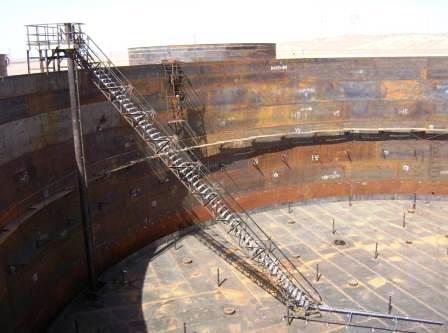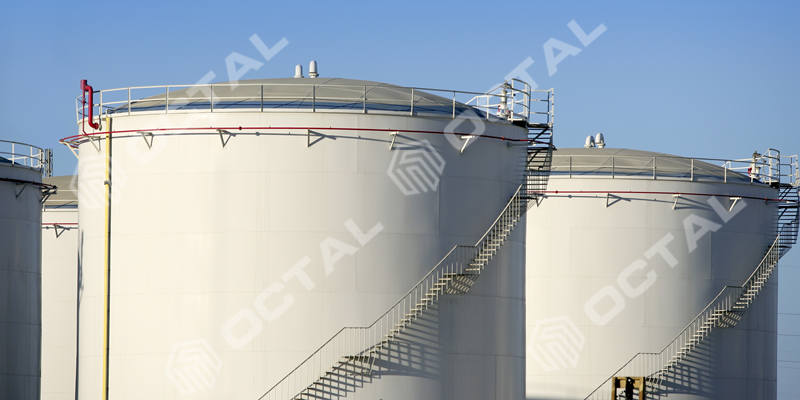The Future of API 650 Welding Inspection with Modern Digital Methods Integration
Wiki Article
Just How Welding Evaluation Functions: A Comprehensive Overview for Professionals
Welding inspection plays an essential role in making certain the safety and security and dependability of welded frameworks. It involves an organized method that includes both visual inspection and advanced testing approaches. Specialists need to familiarize themselves with essential criteria and laws controling the industry. Understanding the common issues that can occur during welding is important. This overview will certainly explore these components thoroughly, offering insights right into the procedures that copyright high quality and integrity in welding.Comprehending the Importance of Welding Inspection
While many may take too lightly the value of welding inspection, it plays a necessary function in making sure the honesty and safety of welded frameworks. Reliable welding assessment recognizes prospective flaws and imperfections that can endanger structural stamina and lead to devastating failings. The inspection process incorporates different methods, such as visual evaluations, ultrasonic testing, and radiographic analyses, each contributing to the overall examination of weld quality.
Along with guarding the architectural honesty, welding examination guarantees conformity with industry standards and customer requirements. By making sure that welds satisfy called for resistances and qualities, assessments aid preserve the integrity and long life of components in different applications, from construction to aerospace. A rigorous evaluation procedure fosters a society of top quality and responsibility among manufacturers and welders. Ultimately, welding evaluation is not just a procedural action; it is an essential practice that underpins the safety and efficiency of crafted systems across varied industries.
Secret Specifications and Rules in Welding Examination
The foundation of reliable welding examination rests on adherence to developed criteria and laws. Various companies, such as the American Welding Society (AWS) and the American National Requirement Institute (ANSI), established forth guidelines that ensure quality and safety and security in welding practices. Trick standards, such as AWS D1.1 for architectural welding and ASME Section IX for pressure vessels, give complete criteria for welding assessments, treatments, and credentials. Governing structures, consisting of those from the Occupational Safety and Wellness Management (OSHA), required safety practices and worker securities in welding environments. Conformity with these requirements is essential for accomplishing consistent weld high quality and decreasing the threat of failures. Additionally, worldwide requirements like ISO 3834 better improve global consistency in welding assessment techniques. Experts must stay notified concerning these guidelines to guarantee that their inspection approaches align with industry expectations and legal needs, therefore safeguarding both workers and architectural stability.Preliminary Preparation and Visual Inspection Techniques

Reliable welding inspection begins with a complete pre-inspection list that assures all essential conditions are fulfilled prior to the real assessment occurs. Following this preparation, aesthetic flaw recognition plays an essential duty in examining weld quality, allowing examiners to find problems such as splits or inappropriate blend. Together, these strategies create the structure for an effective welding inspection process.
Pre-Inspection Checklist
Before starting any kind of welding inspection, a comprehensive pre-inspection checklist is important to guarantee that all required prep work are completed and that visual evaluation methods are efficiently used. Crucial element of this list include confirming the welding procedure spec (WPS), ensuring all tools is calibrated and in great functioning problem, and validating that the inspector has the called for accreditations. In addition, it is important to review any type of previous evaluation reports and to assess the workplace for security hazards. The examiner should likewise verify that all appropriate documents, such as product certifications and evaluation documents, is readily offered. Completing this checklist helps to develop a strong foundation for a successful assessment process, improving the integrity of the outcomes acquired.Visual Problem Recognition
An effective visual problem recognition process begins with mindful initial prep work and the application of well established aesthetic inspection strategies. Examiners ought to assure that the welding location is tidy and well-lit, as sufficient visibility is vital for spotting issues. An extensive assessment of the weld joint's surface permits the identification of discontinuities, such as cracks, undercuts, or Source porosity. Examiners usually utilize devices like multiplying glasses or mirrors to boost their view of hard-to-reach areas. In addition, they should recognize with the specific welding requirements and standards pertinent to the task. By adhering to these approaches, inspectors can successfully identify prospective problems, securing the integrity of the weld and compliance with market criteria.Non-Destructive Testing Approaches: An Overview
Non-destructive screening (NDT) approaches play a vital function in the welding examination procedure by guaranteeing the integrity and integrity of bonded frameworks without causing any damages (API 650 Welding Inspection). These techniques allow inspectors to assess the quality of welds while protecting the components being checked out. Typical NDT approaches consist of ultrasonic screening, radiographic testing, magnetic fragment screening, and color penetrant screening, each offering special benefitsUltrasonic testing utilizes high-frequency sound waves to detect interior flaws, while radiographic testing utilizes X-rays or gamma rays to envision the inner structure of welds. Magnetic bit screening discloses surface and near-surface problems by using a magnetic area and iron particles to the weld area. Color penetrant screening highlights surface-breaking defects with the application of a colored dye. Together, these NDT techniques supply essential understandings into weld quality, enabling specialists to make educated choices relating to safety and security and compliance in welding applications.
Usual Flaws and Their Ramifications
Identifying common problems in welded joints is important for keeping structural honesty and safety. Different problems can occur during the welding procedure, each lugging possible ramifications for the total efficiency of the framework. Porosity, identified by tiny imp source gas pockets within the weld, can damage the joint and jeopardize its load-bearing capability. Fractures may create as a result of thermal tension or inappropriate cooling, leading to prospective failing under stress and anxiety. Insufficient combination takes place when the weld steel does not completely bond with the base product, causing weak joints that might not withstand designated tons. Damaging, where the base steel is eroded, can additionally minimize the efficient cross-section of the weld. Additionally, extreme support can develop stress focus that could lead to failure. Identifying these issues immediately enables corrective actions, ensuring the longevity and dependability of bonded structures in critical applications.Tools and Equipment Used in Welding Inspection
Efficient welding assessment depends on a variety of specialized tools and tools to ensure the quality and honesty of welded joints. Necessary tools consist of aesthetic inspection devices, such as amplifying borescopes and glasses, which allow inspectors to very closely examine welds for surface area issues. Non-destructive testing (NDT) methods, such as ultrasonic testing, radiographic testing, and magnetic bit screening, are fundamental for recognizing inner imperfections without damaging the material.Dimension devices, including calipers and weld evaluates, aid analyze dimensions and ascertain compliance with requirements. In addition, hardness testers evaluate the mechanical residential or commercial properties of welded joints. Personal safety devices (PPE) is also necessary, securing the security of assessors while operating in possibly harmful atmospheres (API 650 Welding Inspection). Each tool serves a certain objective, collectively improving the performance of welding assessment and adding to the integrity of completed projects
Often Asked Inquiries
What Qualifications Are Needed to End Up Being a Welding Assessor?
To become a welding assessor, individuals generally need pertinent qualifications, such as AWS CWI or CSWIP, together with experience in welding processes, design concepts, and understanding of inspection methods, security requirements, and relevant codes.Exactly How Frequently Should Welding Inspections Be Performed?
Welding examinations must be conducted frequently, preferably at various project stages, including pre-weld, during-weld, and post-weld. Regularity may also depend upon market standards, project specifications, and the intricacy of the welds involved.Can Welding Defects Be Repaired After Assessment?

Yes, welding issues can frequently be repaired after assessment. Depending on the intensity and sort of issue, proper methods such as revamping or extra welding may be utilized to bring back architectural honesty and safety conformity.
What Industries Require Normal Welding Examinations?

Various sectors, consisting of building and construction, production, aerospace, and automotive, require regular welding inspections - API 650 Going Here Welding Inspection. These assessments guarantee adherence to safety and security criteria and high quality control, reducing dangers connected with architectural integrity and functional efficiency in welded components
Just how Do I Select a Welding Evaluation Service?
To choose a welding evaluation service, one need to consider qualifications, experience, certifications, and market credibility. Furthermore, assessing client reviews and assuring the solution meets pertinent standards can assist assure quality examinations and trustworthy results.
While lots of may underestimate the value of welding assessment, it plays a necessary duty in making sure the stability and security of bonded structures. Secret standards, such as AWS D1.1 for architectural welding and ASME Section IX for stress vessels, supply extensive criteria for welding qualifications, inspections, and treatments. Efficient welding evaluation starts with an extensive pre-inspection list that guarantees all needed problems are met before the real examination takes location. Prior to commencing any welding evaluation, a thorough pre-inspection list is essential to assure that all needed prep work are finished and that visual assessment methods are properly utilized. Non-destructive screening (NDT) methods play a necessary duty in the welding examination procedure by making certain the stability and dependability of bonded structures without causing any damage.
Report this wiki page